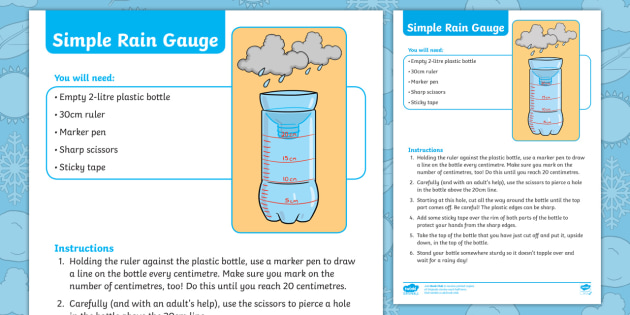Top Functions to Try To Find in a High-Quality Rain Gauge for Your Garden
Top Functions to Try To Find in a High-Quality Rain Gauge for Your Garden
Blog Article
Introducing the Science Behind Rainfall Determines: Just How These Instruments Play a Vital Role in Climate Study and Ecological Tracking
Rain gauges, apparently basic devices, hold an extensive importance in the realm of climate research study and environmental surveillance. As we peel off back the layers of this scientific shroud surrounding rain evaluates, we discover a world where precision, information accuracy, and meticulous monitoring converge to unveil a much deeper understanding of our transforming environment and its impact on the planet.
Importance of Rain Scales
Rainfall gauges play an indispensable function in monitoring and measuring precipitation levels, providing vital information for climate research and analysis. These gadgets are fundamental in evaluating the amount of rains that takes place in a particular location over a specific duration. By gauging and collecting rainwater, rainfall gauges deal valuable insights into the circulation and strength of precipitation, helping meteorologists, hydrologists, and climatologists in understanding weather condition patterns and patterns.
One of the key reasons why rainfall gauges are vital is their capacity to offer local and exact information. Unlike satellite or radar-based measurements, which offer more comprehensive observations, rainfall assesses offer accurate details particular to the location where they are placed. This localized data is important for numerous applications, including flooding forecasting, dry spell monitoring, and water source monitoring. In addition, lasting information collected from rain assesses assists in evaluating climate adjustment impacts and patterns, adding considerably to clinical research and decision-making procedures. Essentially, rain assesses function as vital devices in the field of meteorology and ecological scientific research, playing an essential role beforehand our understanding of climate and climate dynamics.
Kinds Of Rainfall Scales

Capability and Operation
In the realm of environment study and atmospheric studies, the effectiveness of rain gauges depend on their detailed capability and specific functional mechanisms. Rain determines are made to precisely measure the amount of rainfall that tips over a details area during a collection period. These tools normally contain a funnel that accumulates rainwater and channels it into a gauging tube. The measuring tube is marked with calibrated measurements that enable the precise metrology of rainfall.
The performance of rainfall gauges is based upon the concept of collecting and measuring rainwater in a standard way. This accumulated information is essential for understanding local climate patterns, tracking long-term climate trends, and assessing environmental effects. To make sure precise measurements, rainfall gauges need to be purposefully placed in open locations away from blockages such as structures or trees that might interfere with the collection process.
The operational element of rainfall gauges entails normal maintenance to avoid particles build-up, calibration checks to preserve measurement accuracy, and data recording for analysis (rain gauge). On the whole, the functionality and operation of rain gauges are essential for collecting trustworthy rainfall information crucial to environment study and ecological monitoring
Duty in Environment Research
Provided the essential value of precise precipitation dimensions in recognizing weather condition patterns and environmental effects, the function of rain determines in climate research study is crucial. Rain gauges offer necessary information for climate research by quantifying the quantity of precipitation that drops over a certain location during a given duration. This information is important for monitoring long-lasting patterns in precipitation patterns, see this evaluating the influence of climate change on rains distribution, and enhancing environment models.

Environment scientists use data accumulated from rain gauges to analyze variants in rainfall degrees, identify local climate fads, and examine the efficiency of water resource monitoring methods. By comparing historic rainfall information with present measurements, researchers can detect changes in rainfall patterns, such as changes in the regularity or intensity of rainfall events. This details is essential for understanding just how environment modification is affecting precipitation dynamics and can aid policymakers make informed decisions relating to adaptation and reduction strategies.
Applications in Environmental Monitoring

In flood forecasting, rainfall gauge information helps to track rainfall intensity and distribution, permitting authorities to provide prompt warnings and take required measures to minimize flood risks more helpful hints (rain gauge). Dry spell surveillance relies upon rain scale information to examine wetness levels in the dirt and track rainfall deficits, assisting in the identification of drought-prone locations and the implementation of dry spell response methods
Moreover, rainfall gauge data plays an essential function in water source management by supplying details on water accessibility and use patterns. This information is made use of to make enlightened choices concerning water allowance, conservation actions, and lasting water resource planning. Furthermore, in agriculture, rain gauge data assists farmers in maximizing watering schedules, plant choice, and total farm administration practices based upon neighborhood precipitation patterns. On the whole, rain determines are essential tools in environmental surveillance, offering important insights that contribute to informed decision-making and sustainable source administration.
Final Thought
To conclude, rainfall evaluates are necessary tools for gauging precipitation, giving important data for climate research study and environmental monitoring. With different types and performances, rainfall gauges play an important duty in comprehending rainfall patterns and their influence on the environment. By accurately determining rainfall, these devices add to the innovation of clinical understanding and help in making educated choices relevant to water source management and catastrophe readiness.
Rainfall assesses play a vital try this web-site role in tracking and gauging precipitation levels, supplying necessary information for climate research study and analysis. The conventional rain gauge, understood as the "tipping bucket" gauge, is one of the most frequently made use of gadgets. Ultrasonic rain assesses use sound waves to find the presence of rainfall, supplying real-time information on precipitation degrees.Climate researchers make use of information collected from rain evaluates to examine variants in rainfall levels, recognize regional environment patterns, and evaluate the effectiveness of water source management strategies.In verdict, rainfall assesses are vital devices for determining precipitation, giving valuable data for climate study and ecological tracking.
Report this page